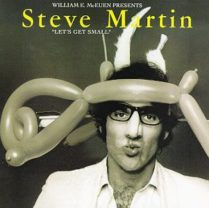Let’s Get Small With Impact
 We have big missions. End hunger. Create a just society. Save the whales. But those aren’t the calls to action that make people give.
We have big missions. End hunger. Create a just society. Save the whales. But those aren’t the calls to action that make people give.
First, we need a call to action that is about a unit – person, animal, or story. Our behavioral science unit talks about the identifiable victim effect as one of a few key insights for fundraising. A prominent study found that a story of a child does better than the same story with information about the general problem of poverty in Africa. Additionally, a story of one boy did as well as the story of one girl; both did better than the story of the boy and the girl together.
When we hear a single story, we react with emotion and affect. When we hear the story of many, emotion and affect get blunted.
Second, we need a call to action that is about something that the person can accomplish. Researchers tested abstract goal language (e.g., save the environment, make someone happy) versus concrete goal language (e.g., increase recycling, make someone smile). They found people who took on concrete goals were happier as a result of their positive behavior.
These concrete actors could see the impact they had and it was the one they intended to have. And when someone leaves happier with their impact, the more likely they are to repeat the behavior.
Third, we need a call to action that is likely to have a positive impact. This is where “Like us on Facebook” or “Learn more here” tend to fall flat. They are about a unit. They are accomplishable. But they seem destined not to create change. Researchers call the ability to achieve what you set out to achieve as “self-efficacy”; its opposite – pseudo-inefficacy – is what makes people not want to act when you talk to them about the enormity of the problem. But another route to inefficacy is when people don’t see the connection between the action they take and the outcome they seek.
(This is also the learned hopelessness we foster when we don’t report back impact. If you donate/sign/call/volunteer and you hear nothing, it’s easy to assume you didn’t have an impact and recall that the next time you are asked).
So let’s put that all together. When the Montgomery Bus Boycott was organized, the call to action wasn’t “end racism” or even “help end segregation in Montgomery.” Too big. I don’t see how I am going to do that (or even how we are).
That’s why the call to action was “don’t ride the bus.” I know how to do that. I see that it will have a microimpact. And I see that if enough of us do that, we can tip the battle.
More recently, a 2018 cause celebre: don’t use plastic straws. There are 150 million tons of plastic in the sea, plus or minus, with five to 13 million tons joining each year. The mind boggles. But it doesn’t act. Whereas I can think about how to change my behavior not to use a straw.
Who knows? If that action feels good, maybe I’ll take another. People talk about gateway drugs and slippery slopes. Think what we can do if we make the trips up as easy as the ones down.
So what concrete, but important, thing can your donor’s $20 bill do? If you can tell that to more donors, you can get more bills.
Nick



As with all successful comms strategies, your winning approaches each start with a deeper, fresher insight into the targeted audience’s “state of me”. Sweet thinking.
Impact is crucial.
But sometimes clients view it very differently,
I constantly battle over stories : Organizations want to use those that show what’s already been accomplished. I want stories that show need — what’s left to be done.